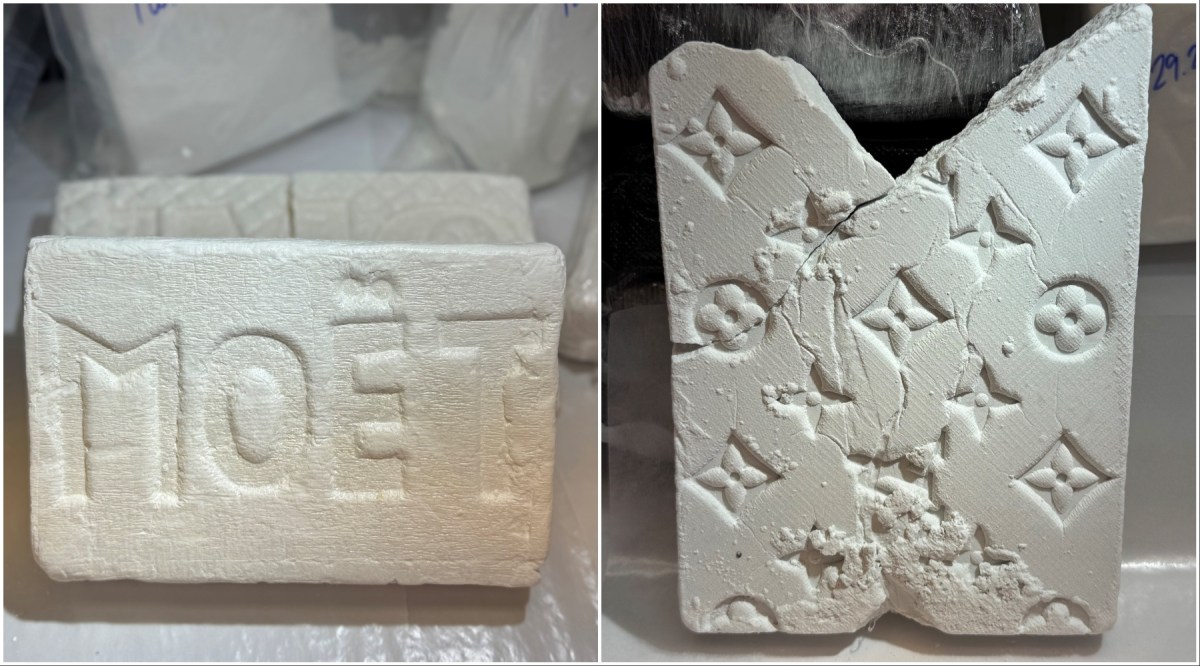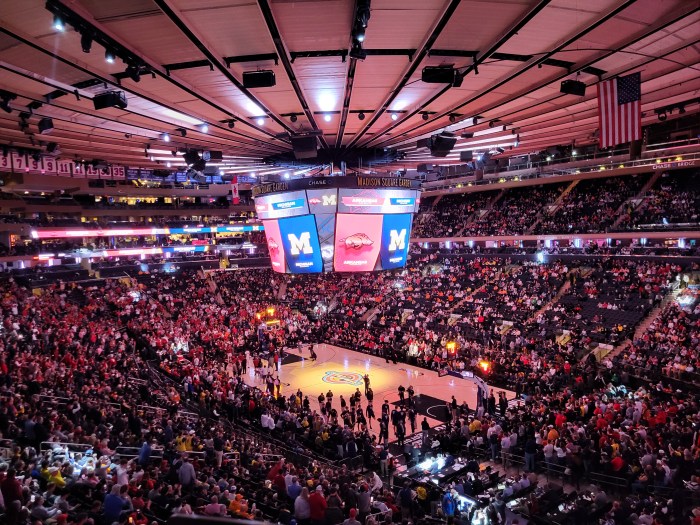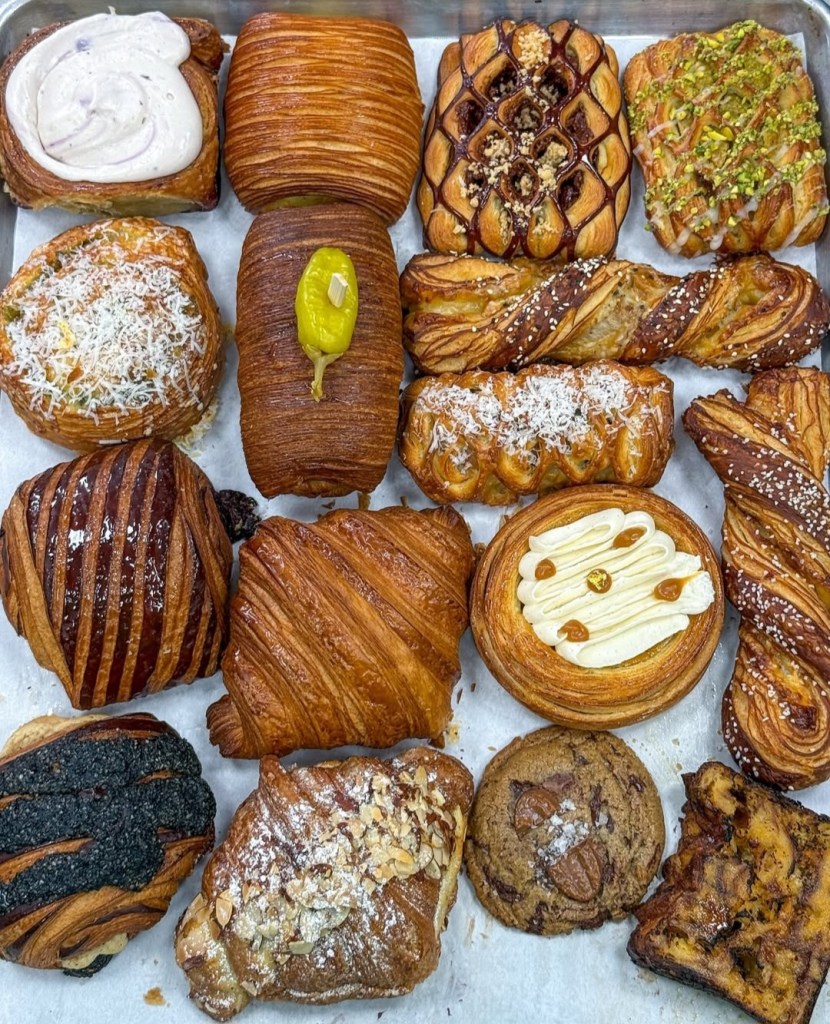BY STEPHANIE BUHMANN
Kalina & Riley bring thought & vigor to new works
Among many exhibitions featuring figurative painting these days — think only Lisa Yuskavage at David Zwirner Gallery or Hernan Bas at the Brooklyn Museum for example — it is refreshing to find two contemporary painters dedicate so much thought and vigor to linear abstraction.
The mid-career artist Richard Kalina (who has exhibited regularly in New York since 1969) and the younger Jennifer Riley (who is making her New York solo debut this month) both pursue a form of abstraction that is based on color, line and pattern. Located in Chelsea (Kalina) and the Lower East Side (Riley), both exhibitions offer a good opportunity to experience two sophisticated takes on what mesmerizing expressiveness these “simple” ingredients can behold.
For years, Richard Kalina has been engaged with the issues of abstract art, trying “to create a sort of grammar of abstraction, [to] break it apart and put it together in new ways.” Since 2001, he has worked in a technique that combines painting with collage. He paints large sheets of very thin rice paper with translucent acrylic paint, which he then tears into small, roughly rectangular pieces and glues with acrylic medium onto linen that is stretched over board.
The rice paper becomes essentially transparent and according to Kalina the “color is trapped in it.” This form of layering is both physical and conceptual. It makes for transparency and, as the artist puts it, offers a “certain quality of instability.” While the background is usually a bright white, the semi-transparent pieces of paper are deeply saturated and together amount to elaborate patterns that exude a compelling radiance. There is the illusion of a light source coming from behind the canvas and the effect is similar to that found in stained glass windows or mosaics.
In “Pearl of the Indies” (2007), the collaged pieces of paper create an elegant surface structure, which counterbalances the crispness of the colored shapes. There is a suggestion of a rectangular ground held in light pink, as well as several multi-colored squares that seemingly float above it, but there are in fact no straight lines. Each line is hand-drawn and wavers, leaving the squares to appear like pieces of blankets or textiles dangling in the wind. Kalina states: “my geometric underpinnings are loosened [they are] pulled and tugged, so that the forms are given life, a sense of three dimensionality and space, and a certain lightheartedness and playfulness. [This] allows for drawing, for an intuitive, visceral approach to form, [which] I believe, gives them the warmth and sense of the personal and the pleasurable that their decorative references imply.” The only truly geometric shapes are actual voids, cutouts that show small squares of exposed linen. Together with painted white lines that suggest an overall grid, they provide the composition with a sense of order. As is the case in music, Kalina achieves rhythm by establishing an overall measure. In fact, Kalina’s titles often contain musical references and in this exhibition, they often refer to imaginary operas of the 17th or 18th centuries.
Kalina’s exhibition also includes a selection of new ink and watercolor drawings that were made during his recent fellowship at the Bogliasco Foundation outside of Genoa, Italy. Turquoise and yellow occur frequently, bringing to mind water and sun, and metaphorically reflecting the decorative motifs of Genoa and the surrounding area. Kalina writes: “Color has been an important element in my work, both emotionally and spatially. My goal is to make a painting that is musical and pleasurable – something that carries you away. Intense color seems to have a life of its own and is hard to resist.” Much truth can be found in Kalina’s distinct colors and forms. There is clarity of thought, which allows each viewer to project themselves onto the works and use them as a point of departure for their own imagination.
In comparison, Jennifer Riley’s oil paintings, albeit abstract, contain more obvious references to nature. Her dense conglomerates of colorful geometric shapes easily bring mountain ridges and wave crests as known from Hokusai to mind.
Riley’s ambitions are high. She aims to “develop a language in painting that is clearly her own,” and yet does not deny what and those who have informed her. In fact, she does not shy away from citing her influences. She has a sincere interest in classical art and architecture and she likes to reference forms, colors and moves found in other painters, both historical ones and contemporaries. The pop-abstractionist Nicholas Kruschenick, David Smith, “one of the leading cross-pollinators of drawing, painting and sculpture,” Ellsworth Kelly “for his work with shape, color and space,” as well as Bridget Riley (who has no relation to this artist) “for her color and pattern” are significant landmarks in Riley’s art history.
Riley essentially begins by drawing directly onto the white primed canvas and then, adds paint directly in order to acquire the most luminosity. The whites are the support surface. In this technique, there is no pentimento or over painting, and Riley leaves herself little room for mistakes. While the works appear as hard-edged, they are – as is the case in Kalina – in fact, organic. The geometric forms are hand painted freely, leaving lines “to waver and breathe.”
The title “To Be A Thing In This World” is inspired by Riley’s thought that her patterns, shifts and fractures address the dynamic movement that pushes life ahead and is reflected in everything from the “ocean’s floor to a modernist building.” According to Riley, the language of painting should be capable of “suggesting a narrative that recaptures the forms, shapes, stories, myths and lore that span the material culture of our civilization.” Works, such as “Increasing Ground” or “Interrupted Sediment” are good examples of how everything is kept in a constant state of flux. The shapes seem cartographic and one can imagine them building up into elaborate structures or stretching out into even planes. They are infinite and in transition, each painting mounting a specific state in an endless cycle. In the end, Riley hopes to create a lasting impression, which will “leave us with a feeling that anything is possible.”




































